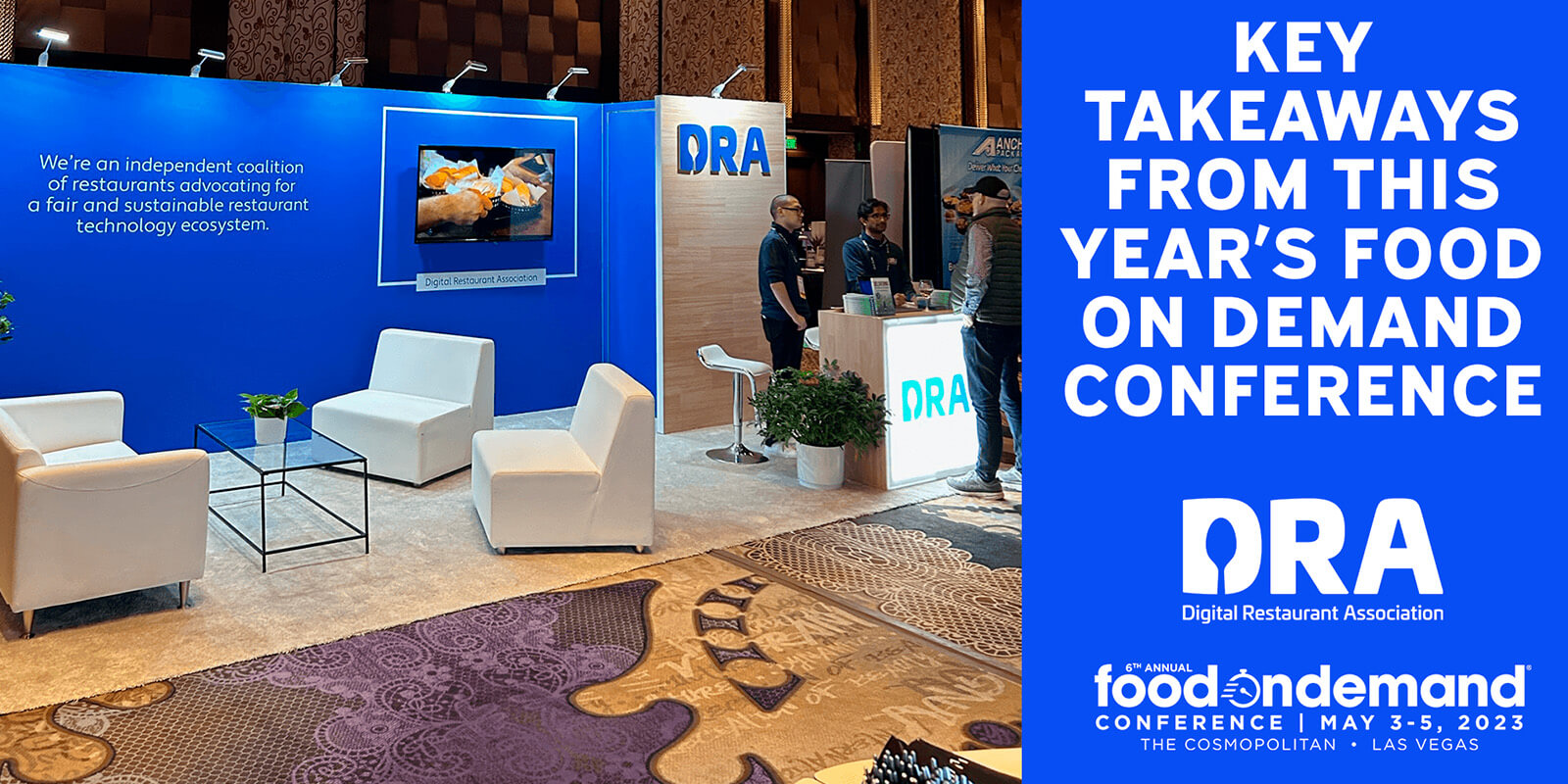
June 9, 2023 • Featured Spotlight
Key Takeaways from this year’s Food on Demand Conference
The Digital Restaurant Association joined some of the most innovative leaders in the restaurant industry at the Food on Demand Conference in Las Vegas to discuss the quickly evolving landscape of restaurant technology and how to utilize digital tools to continue providing customers with world-class service.
Food on Demand featured panels on a variety of topics, from transformative solutions that change how restaurants can reach new consumers to strategies for using available data to increase efficiency and maintain a profitable business.
Our team also had the opportunity to have a booth on the expo floor, where we met countless operators who shared their stories about the difficulties adapting to the digital world. The operators, spanning from small mom and pop shops all the way to the largest chains and franchisees running hundreds of restaurants across the country, all expressed concerns about losing control over the customer experience, risking their brand and customer loyalty.
Here are three key takeaways from the Food on Demand conference and how DRA is helping members overcome obstacles in the digital restaurant industry:
Takeout and delivery are here to stay, but the new normal has challenges and opportunities.
The pandemic forced every restaurant to go digital in order to survive. Takeout and delivery were the only way restaurants could serve customers and, now, it’s still a significant portion of restaurant business. During the “Your Restaurant Marketing Questions Answered” panel discussing marketing strategies to build customer loyalty, panelist Otto Othman, owner of Pinco’s Tacos, said that 75% of his restaurant’s business was now takeout with 40-45% of that being through a delivery app. Consumers have discovered they can get whatever food they want, whenever they want, wherever they want, and it’s becoming a normal expectation.
However, the rapid expansion of third party delivery platform utilization has added a layer between restaurants and their customers that makes it difficult for the operator to maintain complete control of the customer experience. The next step is using the level of on demand convenience that third party platforms have instilled in consumers to turn them into loyal first party customers.
It’s all about technology integration and consolidation.
Customers have grown used to the convenience that digital technology has introduced to the dining experience. Tools like online ordering systems, mobile apps, digital menus, and contactless payment options are becoming essential parts of a restaurant’s operation to meet consumer expectations. Even if third party platforms won’t share their data, restaurants can use these tools to collect and analyze their own data, allowing operators to gain valuable insights to effectively optimize their operations. Savneet Singh, CEO of PAR Technology, noted at the CEO Roundtable that kicked off the conference how restaurants now have to run an “Amazon.com warehouse of the back,” and the goal of the industry was balancing “the front-end experience with the back-end” by leveraging digital tools to provide the highest quality service in both.
We also saw on the Food on Demand expo floor that the options can be overwhelming. Restaurants already juggle orders from multiple sources – adding more screens to manage might create more confusion and decrease efficiency. As the digital restaurant environment continues to evolve, we’ll see the growth of consolidation solutions, that integrate with potentially 100+ technology partners, to provide a streamlined digital experience to customers and operators.
Operators feel pressured by third party delivery platforms to have parity between dine-in and takeout prices.
One of the most resounding concerns we heard from operators at Food on Demand was the pressure they face from third party platforms. Some claimed that the jury was still out, but when our Executive Director, Joe Reinstein, posed an extra question to the crowd during a panel asking if any third party delivery platform had asked them to have parity pricing on their menu, he was met with a resounding, “Yes!”
We heard from operators about third party delivery companies continuing to add restaurants to their platforms without permission, especially when restaurants had previously asked to be removed from the platform. We also heard that many business owners are hesitant to speak out because they are actively negotiating commissions with these platforms and feared reprisal, reaffirming the DRA’s important role in galvanizing the industry to push back with advocacy, innovation and action. We are committed to being the collective voice for hundreds of member restaurants to create balance in the industry through education, technology solutions, and advocacy.
